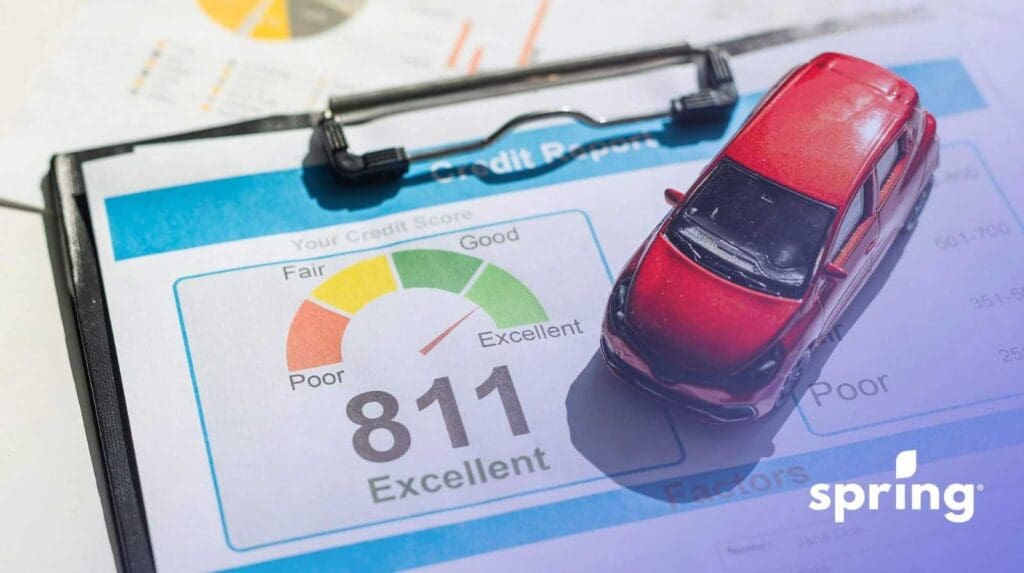Whether you can afford to put aside a lot of savings each paycheck or only a little here and there, every dollar you put into an RRSP will not only help you save for retirement but will also give you tax advantages and reduce your annual tax burden. This is because RRSP contributions are tax deductible. If you’re still not sure what RRSPs are or how they work, keep reading for a quick look at some RRSP basics and everything you need to know to start saving.
Don’t let the name fool you. An RRSP (short for “registered retirement savings plan”) might sound a little boring, but it’s actually an incredibly powerful tool that will help you keep more money in your pocket and your bank account—now and tomorrow.
Backed by the Canadian federal government, the primary goal of an RRSP is to help you save for retirement. It does this by lowering your annual taxes and letting you build compound interest tax-free.
In other words, as a reward for putting some of your own money aside for your retirement, the government gives you significant yearly tax breaks. You save more money, get to lower your taxes, and build compound interest faster. It’s a win, win, win.
If you’re not already contributing to an RRSP, here’s a quick look at the basics.
How Does An RRSP Work?
An RRSP is a lot like any other savings plan but with some added perks. You can open one through a bank or other financial institution, or you may even be able to join an existing plan through your employer.
You can “set it and forget it” by setting up automatic payments or contributions from your paycheck, or you can make contributions periodically when the time is right for you.
Unlike other tax savings accounts or plans, there’s a limit to how much you can contribute each year. This limit changes slightly from year to year and is also based on your income. For example, the contribution limit for the 2025 tax year is 18% of your pre-tax dollars earned, up to a tax deduction limit of $32,490 on all RRSPs, such as Spousal RRSPs for spouses and common-law partners, not just your individual RRSPs.
Read more: RRSP Contribution Limits, Dea dlines & Tips To Know For 2024
What Type Of An Account Is An RRSP?
While we’ve already mentioned that RRSPs are registered retirement accounts, many people don’t realize that they’re also investment accounts. With this account, you can grow qualified investments like mutual funds and exchange-traded funds. While you usually have to pay tax or capital gains on investment income, you don’t have to with investment earnings on your RRSP contributions and all of your savings deposits are tax deductible.
Due to the fact that this is an investment account, it never hurts to get investment advice on investment decisions. A financial advisor can help you decide which account is best for you and the best way to invest your money
What Are The Benefits Of An RRSP?
The main purpose of an RRSP is to help you maximize your savings for retirement. It does this in the following way: Every dollar you contribute to an RRSP in a given tax year lowers your yearly income in the eyes of the CRA (Canada Revenue Agency) that same year.
This is important because the higher your income is, the more taxes you pay. Not only that but the higher your income goes, the more likely you are to hit higher tax brackets. For instance, if you make below $57,375, your annual tax rate is 15%. If you make more than that, the dollars you earn above $57,375 are taxed higher and higher at different thresholds. Each of these thresholds is called a tax bracket.
So by contributing to an RRSP, you’re not only reducing your taxable income, but you might also lower your tax bracket as well. Additionally, the interest you earn on your RRSP savings is also tax-free. This allows your RRSP to grow faster through compound interest.
Ideally, RRSP amounts aren’t withdrawn until retirement because you do have to pay tax when you withdraw RRSP amounts. However, in retirement you’ll be earning less, paying less tax, and your RRSP dollars will have been building compound interest tax-free—for decades.
How Do RRSP Contributions Impact Your Tax Bill?
Let’s say you make $65,000 per year. You’d normally be taxed 15% on the first $57,375 of earnings and 20.5% on the remaining $7,625. Add that all up, and you could end up owing as much as $10,169.38 in taxes (without factoring in other deductions).
However, if you contribute at least $57,375 to an RRSP then the CRA will treat you as if you earned $57,375 and only tax you at 15%. This means you could end up lowering your tax bill by more than $1,200!
Not only do you save potentially $1,200 on your taxes but also the $7,625 you’ve put into your RRSP is allowed to build interest tax free, year after year, until you withdraw it.

What If I Have A Spouse?
In many cases, it makes sense to open a spousal RRSP. This is an RRSP that is shared by a married or common-law couple.
The same contribution limits apply to a spousal RRSP, so this doesn’t mean you can save more or reduce your taxable income. However, a spousal RRSP can be helpful in instances where one partner has a higher income than the other, for instance, if one partner has left the workforce to raise kids.
The partner with the higher income can contribute to the spousal RRSP and then both can make equal withdrawals during retirement. Smaller, equal withdrawals can also result in lower taxes on the withdrawals compared to if one partner was making larger withdrawals.
When filing taxes, the yearly contributions to the spousal RRSP can also be claimed in different amounts for each partner. For instance, if the couple puts $10,000 into their spousal RRSP in a given year, Partner A can claim $7,000 on their taxes, and Partner B can claim $3,000. This can be advantageous depending on each partner’s income and tax bracket.
What’s the difference between an RRSP and TFSA?
While RRSPs allow contributions on a tax-deferred basis (you lower the taxes you pay in the short term and pay a lower cumulative rate of taxes when you withdraw down the road), the amount you withdraw in a TFSA will never be taxed. Additionally, the interest you earn in a TFSA will never be taxed.
The big advantage an RRSP has over a TFSA is that an RRSP lowers your taxable income each year and can put you in a lower tax bracket, whereas a TFSA does not. It’s almost always more advantageous to max out your RRSP contributions each year before putting money into a TFSA.
Here’s a quick comparison between the two:
| RRSP | TFSA | |
| Min. age to contribute | None | 18 years of age |
| Max. age to contribute | 71 years of age | None |
| Contrib. limits | 18% of previous year’s annual earned income (up to $32,490) Unused room can be carried forward |
$7000 per year Unused room can be carried forward |
| Lowers taxable income? | Yes | No |
| Withdrawal tax? | Yes | No |
| Do withdrawals reduce Old Age Security (OAS) payments? | Yes, if your net income exceeds $90,997 (2025 figure) | No |
Common Mistakes To Avoid With An RRSP
Unlike other investment options, getting the most out of an RRSP is fairly straightforward. That being said, there are some simple and surprisingly common mistakes you’ll want to avoid, as they can derail your progress and hinder your savings goals.
Making Early RRSP Withdrawals
If you withdraw funds from your RRSP prior to retirement, you’ll have to pay an immediate withholding tax on the amount you withdraw. This tax can be significant: 10% on the first $5,000 withdrawn, 20% for amounts between $5,000 and %15,000, and 30% on amounts greater than $15,000. The amount you withdraw is also considered taxable income, so you’ll be hit again when you file your annual taxes.
Not Making Regular Contributions
It’s always easy to find reasons why you can’t contribute to your RRSP in a given month or pay period. That’s why it’s always best to “set it and forget” with automatic payments or contributions. This can often be set up through your bank, financial institution, or employer if it’s a group plan through work. Consistently contributing a small amount every paycheck will often put you in a better position than trying to make large (but irregular) contributions.
Starting Too Late
The best time to start contributing to an RRSP is yesterday. Time is on your side when it comes to accruing the compound gains that an RRSP yields. If you start contributing to an RRSP when you’re 35, for instance, you still have 30 years of saving and gaining compound interest to take advantage of before you retire. If you start even younger, you’re in an even better position.
How To Withdraw From An RRSP Without Penalties
Registered Retirement Savings Plans (RRSPs) are a great way for those looking to create retirement income when filing your income taxes during your annual tax return. If you take out these funds early, you could be subjected to withdrawal penalties. That said, there are some circumstances where you can take out the funds without penalty.
Lifelong Learning Plan (LLP)
This program allows you to use your RRSP contributions penalty-free in order to take continuing education full-time. With this plan, you can take out up to $10,000 per year for up to four years after you withdraw your first withdrawal. However, you have a lifetime limit of $20,000.
Home Buyers Plan (HBP)
Another way you can take out your contributions early is by using the funds to purchase your first home. You can use up to $60,000 in order to cover the costs, and you have 15 years to repay the funds in your account.
Registered Retirement Income Fund (RRIF)
When you start to withdraw money from your RRSP when you reach retirement age, this account is then turned into a RRIF. This can be a group RRSP, a self-directed RRSP account, or other types of retirement savings accounts. These accounts follow rules similar to those of RRSP.
Going Over Your Contribution Limit
With RRSPs, it’s important that you stay within your RRSP contribution limits. If you exceed your contribution room, then you could be subject to tax implications. If you do have excess contributions, before putting them into your RRSP account, it might be a good idea to put them in a different investment account or save them for the RRSP contribution deadline for the next tax year.








